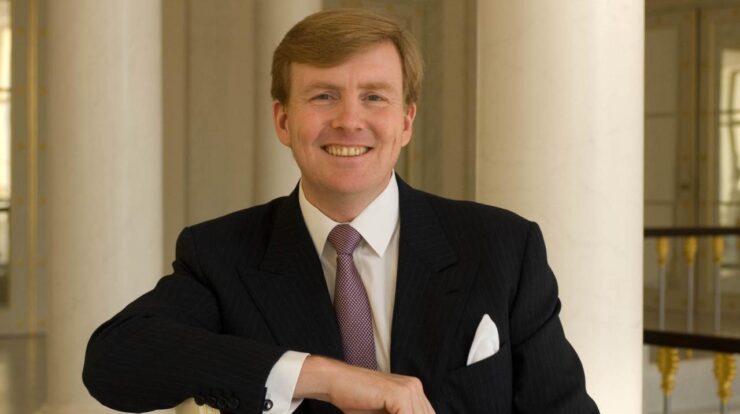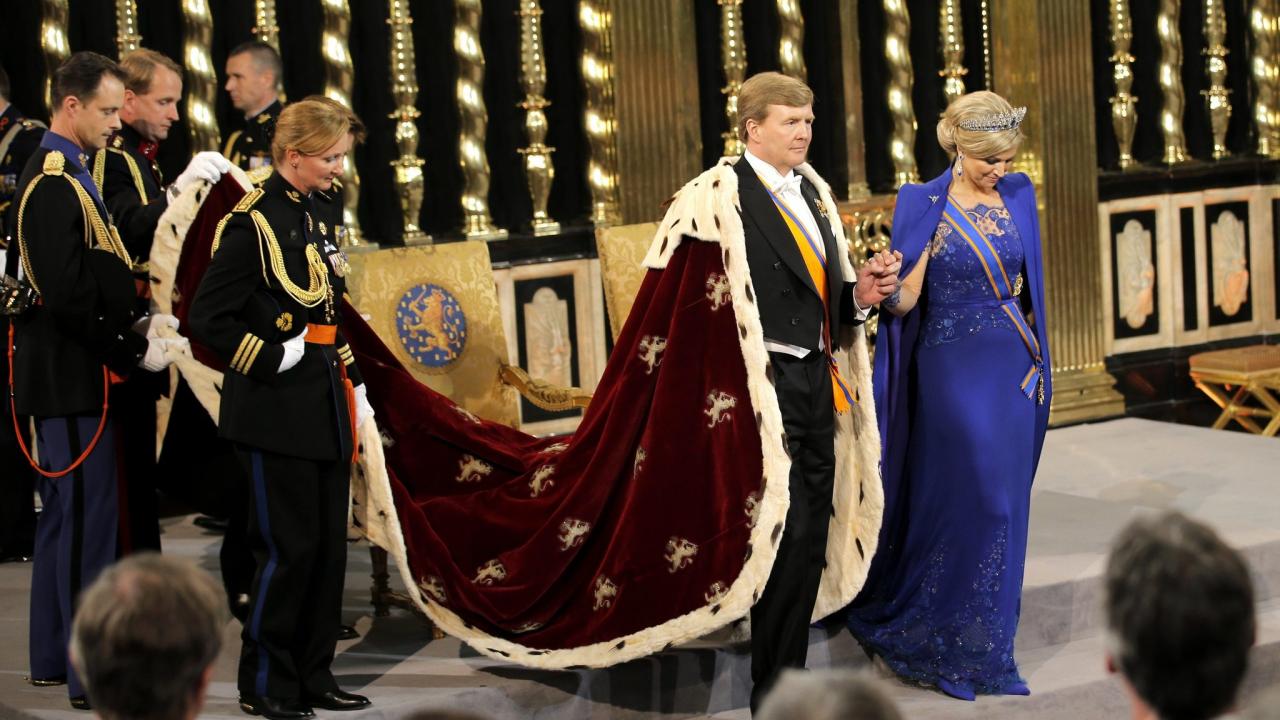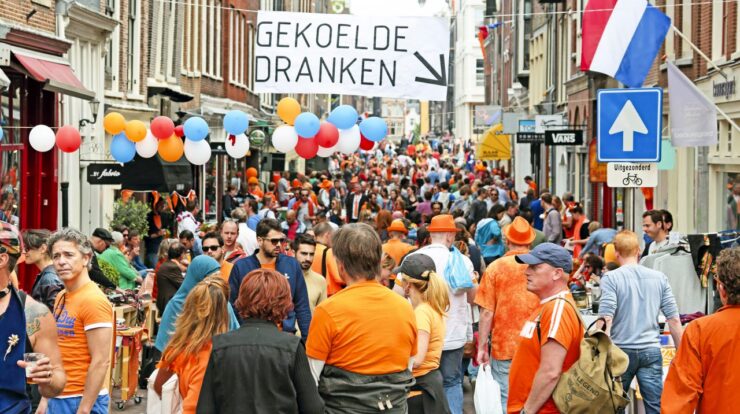
Netherlands King Willem-Alexander reigns over a monarchy steeped in historical significance and continues to play a vital role in modern Dutch society. His responsibilities, the line of succession, and the royal family’s public image are all integral to understanding the enduring legacy of the Dutch monarchy.
From its historical roots to the current reign of King Willem-Alexander, the Dutch monarchy has witnessed pivotal moments and transitions, leaving an indelible mark on the nation’s identity and culture.
Historical Significance
The Dutch monarchy has played a significant role in the history of the Netherlands for over a millennium. The first known ruler of the Netherlands was a Frankish king named Pepin the Short, who was crowned in 751. The Netherlands became a sovereign state in 1581, and the House of Orange-Nassau has ruled the country ever since.
The Dutch monarchy has had a profound impact on Dutch society and culture. The monarchy has been a symbol of unity and stability, and it has played a key role in the development of Dutch democracy. The monarchy has also been a major patron of the arts and sciences.
Key Events and Transitions within the Monarchy, Netherlands king
- 751: Pepin the Short, the first known ruler of the Netherlands, is crowned.
- 1581: The Netherlands becomes a sovereign state.
- 1688: William of Orange becomes King of England.
- 1795: The Netherlands is invaded by France and the monarchy is abolished.
- 1815: The Netherlands is restored to independence and the monarchy is re-established.
- 1890: Queen Wilhelmina ascends to the throne.
- 1948: Queen Juliana ascends to the throne.
- 1980: Queen Beatrix ascends to the throne.
- 2013: King Willem-Alexander ascends to the throne.
Current Reign of King Willem-Alexander

King Willem-Alexander is the current King of the Netherlands. He ascended to the throne on April 30, 2013, following the abdication of his mother, Queen Beatrix. King Willem-Alexander is the first male monarch of the Netherlands since 1890.
As King, Willem-Alexander has a number of responsibilities and duties. He is the head of state and the commander-in-chief of the armed forces. He also represents the Netherlands abroad and performs ceremonial duties.
Succession to the Dutch Throne
The Dutch throne is inherited by the eldest child of the reigning monarch, regardless of gender. If the monarch has no children, the throne passes to the next sibling. If there are no living siblings, the throne passes to the next closest relative in the line of succession.
The current line of succession to the Dutch throne is as follows:
- Crown Princess Catharina-Amalia
- Princess Alexia
- Princess Ariane
- Prince Constantijn
- Princess Laurentien
Personal Life and Interests of King Willem-Alexander
King Willem-Alexander is married to Queen Máxima. They have three daughters: Crown Princess Catharina-Amalia, Princess Alexia, and Princess Ariane.
King Willem-Alexander is an avid sportsman and enjoys playing tennis, golf, and hockey. He is also a passionate sailor and has competed in several regattas.
The Dutch Royal Family
The Dutch royal family consists of King Willem-Alexander, Queen Máxima, and their three daughters: Crown Princess Catharina-Amalia, Princess Alexia, and Princess Ariane.
The Queen is the King’s consort and has a number of official duties. She represents the Netherlands abroad and performs ceremonial duties. The Queen is also a patron of several charities.
The Crown Princess is the heir to the throne. She has a number of official duties, including representing the Netherlands abroad and performing ceremonial duties. The Crown Princess is also a patron of several charities.
The other two princesses have no official duties. They are still in school and live with their parents in The Hague.
Public Image and Perception of the Dutch Royal Family
The Dutch royal family is very popular among the Dutch people. They are seen as a symbol of unity and stability. The royal family is also seen as a source of national pride.
The royal family is often featured in the media. They are often photographed attending official events or on vacation. The royal family is also often featured in television documentaries and news stories.
The Monarchy’s Role in Modern Dutch Society

The Dutch monarchy is a constitutional monarchy. This means that the King has limited political power. The King’s role is largely symbolic and ceremonial.
The monarchy has a number of important functions in modern Dutch society. The monarchy provides a sense of continuity and stability. The monarchy also represents the Netherlands abroad and promotes Dutch culture.
Debates and Controversies Surrounding the Role of the Monarchy
There is some debate in the Netherlands about the role of the monarchy. Some people believe that the monarchy is an outdated institution that has no place in a modern democracy. Others believe that the monarchy is a valuable symbol of national unity and stability.
One of the main controversies surrounding the monarchy is the cost of the royal family. The royal family receives a large amount of money from the Dutch government each year. Some people believe that this money could be better spent on other things, such as education or healthcare.
Comparison to Other Monarchies in Europe and Around the World
The Dutch monarchy is similar to other monarchies in Europe and around the world. The monarch is the head of state and has a number of official duties. However, the Dutch monarchy is unique in that the King has limited political power.
The Dutch monarchy is also more popular than most other monarchies in Europe and around the world. This is likely due to the fact that the Dutch royal family is seen as a symbol of unity and stability.
Closure
In the 21st century, the Dutch monarchy remains a subject of debate and discussion, with its relevance and significance constantly reevaluated. Comparing it to other monarchies provides insights into its unique position within the modern world.
FAQ Compilation: Netherlands King
What are the key responsibilities of King Willem-Alexander?
As the Head of State, King Willem-Alexander represents the Netherlands at home and abroad, signs legislation into law, and plays a ceremonial role in government functions.
How is the line of succession to the Dutch throne determined?
The Dutch throne follows the principle of absolute primogeniture, meaning the eldest child, regardless of gender, inherits the throne.
What is the public perception of the Dutch royal family?
The Dutch royal family enjoys a generally positive public image, known for their approachability and involvement in social causes.
